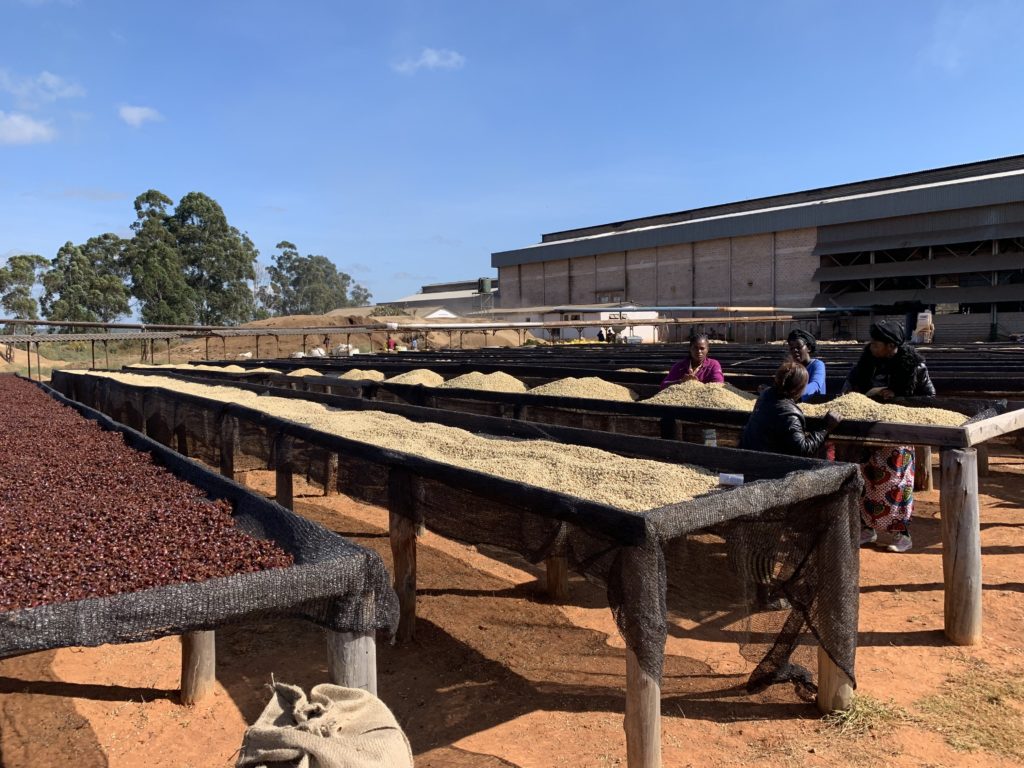
IS DRYING THE NEXT INNOVATION IN GREEN COFFEE POST-HARVEST PROCESSES ?
As we discussed in the last few posts, green coffee process steps before drying have been and are still very innovative today.
I think that the green coffee drying process will also be under innovative investigations. We all know how is important to manage drying process in terms of time, temperature, humidity, sun exposure, etc. Therefore, drying technologies can be applied to better manage this step and potentially improve cup quality as well.
While traditionally considered a low-tech, sun-dependent process, drying is being reimagined with new technologies, materials, and environmental controls to optimize flavour, stability, and repeatability.
Here’s a breakdown of the emerging drying innovations, including some still at the experimental stage:
- Advanced Solar Drying: Beyond Raised Beds
- Innovation: Hybrid solar dryers using polycarbonate tunnels, infrared-transparent films, and solar concentrators.
- Scientific benefit: Improved control of infrared spectrum exposure allows better water activity management while reducing microbial risks.
- Use case: Employed in high-altitude farms with limited sun hours to reduce drying time variability.
- Mechanical Dryers 2.0 (Precision Control)
- From bulk dryers to small-batch programmable units
- Equipped with moisture sensors, humidity feedback loops, and AI-driven profiles (?).
- Enables dynamic drying curves to preserve volatiles in naturals and honeys.
- Particularly useful in co-fermented or infused lots, where precise dehydration is crucial to avoid over-fermentation.
- Dehumidified / Dried Air Systems
- Closed-loop drying chambers using desiccated or silica-treated air.
- Removes water at lower temperatures (25–35°C), preserving delicate aromatics.
- Energy-efficient when combined with heat recovery systems.
- Already adopted in high-end microlots (notably in Panama and Costa Rica) to reduce water activity to <0.5 without heating.
- Dark Room Drying (Photodegradation Avoidance)
- Drying coffee in complete darkness or low UV environments.
- Inspired by cocoa drying protocols and wine aging practices.
- Hypothesis: UV and visible light may degrade certain phenolic compounds or trigger unwanted enzymatic reactions.
- Early trials in Ethiopia and Indonesia showed enhanced longevity in flavour profiles.
- Zeolite and Mineral Desiccant Drying
- Zeolites (aluminosilicate minerals) can adsorb water at low temperature and humidity.
- Placed under raised beds or embedded in drying trays.
- Experimental, but promising for low-energy moisture control in humid regions.
- Could be combined with solar drying to create a passive-active hybrid system.
- Vacuum Drying & Freeze Drying (Pilot Scale)
- Extremely experimental and currently cost-prohibitive.
- Under vacuum, water evaporates at lower temperatures — maintaining maximum aromatic integrity.
- Freeze drying is being tested on cascara and mucilage rather than green beans, with potential to expand.
- Applicable for experimental microlots, where maximum sensory preservation justifies the investment.
Conclusions:
We’re entering an era where coffee drying is no longer just a logistical step, but a precision craft — with real implications for flavour, shelf life, and authenticity.
As a coffee scientist, I believe we must now treat drying with the same attention to kinetics, thermodynamics, and sensory chemistry as we do for roasting or fermentation. Personally, I am very interested by drying at low temperatures, dried air or zeolites and under dark conditions.
Let’s keep pushing the boundaries.
Ennio Cantergiani
Coffee Scientist | Académie du Café – Switzerland
#CoffeeInnovation #PostHarvestScience #CoffeeDrying #FlavourPreservation #ExperimentalCoffee #CoffeeProcessing